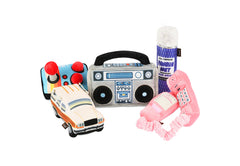Britain is a nation of dog lovers – 26% of the UK adult population owns one, which makes a total of 9.9 million pet dogs. If you’re looking for a four-legged companion or canine addition to complete your family, you’re certainly not alone. That said, introducing a dog into your home is a big commitment and one that needs to be well considered.
Whether you have your heart set on a rescue dog or a puppy from a reputable breeder, getting a new pet inevitably means making changes to your lifestyle as well implementing some essential dog proofing measures around the home. And, once the new member of the family has arrived, they’ll need time to settle into their new home and learn the rules and routines of the household.
Practical changes around the home
Sharing a home with a pet brings with it some practical adjustments to make the property suitable for an animal to live in. Your new dog will need its own space in the house, a dedicated place to eat and somewhere cosy to sleep. Ideally, there should be a space in every room where your pooch can relax, so they don’t suddenly take possession of an armchair or sofa!
Assess your home’s suitability for a dog. Is it safe and practical? Do you need a stairgate to stop him going upstairs? Are your furnishings andcarpets pet friendly? Make sure you get rid of any houseplants that are poisonous to dogs, reposition ornaments so they can’t be knocked over and keep household cleaners well out of harm’s way.
If you have a garden, your dog will love to run around and play in the outdoor space. Ensure any outdoor areas are securely walled or fenced in so that the curiosity to explore beyond the confines of the home can’t get the better of him.
Getting all the family on board
Getting a new pet should be a positive family decision, and the result of a proper discussion that takes everyone’s views on the subject, good or bad, into account. At the end of the day, a new dog is not just a toy to play with. Rather, looking after an animal will mean many changes to the household routine, and everyone should be happy with this. The life of a dog is roughly 10-13 years – that’s a long time to commit to looking after a pet!
Any new dog must fit into the existing family structure and dynamic. If there are children and other pets in the home, it’s important to assess how well everyone will interact with the newcomer, and vice versa. It may also determine which breed of dog would be most suitable.
Setting up rules and routines early on
The children may well be excited about a new puppy but who will take responsibility for the twice daily walk once the novelty has worn off? What about grooming routines? What about holiday plans with an added four-legged member of the party?
Once the decision has been made to bring a dog into your life, rules and responsibilities around pet care should be decided at the outset. This includes feeding and grooming routines, walking and exercising, playtime and puppy/dog training classes. Make sure that everyone in the family knows what is expected so that your new best friend feels integrated into the family. Importantly, dogs are social creatures that should not be left alone in the house for long periods of time. A bored or unhappy dog will behave in an undesirable way that could include barking and howling and even destructive behaviour. You have been warned.
Countdown to the big day
Finally, the big day is approaching, which can only mean one thing: you need to get organised and have all essential doggie equipment to hand. From a dog bed, collar and leash to food & drinks bowls and perhaps some toys, there’s a long list of things you can get. If you’ve chosen to get a puppy rather than an adult animal, a dog crate may be useful too. It can provide a safe haven for your pooch to retreat to when he gets stressed, and can help with toilet training too.
Now is also a good time to find a vet. Ask your pet-owning friends for recommendations for a vet you can trust to look after the health needs of your pet from beginning to end. A good vet is a valuable reference source for all sorts of pet-related advice – from the best type of food to buy to signs and symptoms of disease to look out for and much more besides.Make an appointment to see the vet as soon as you have your new pet for a full check-up.






